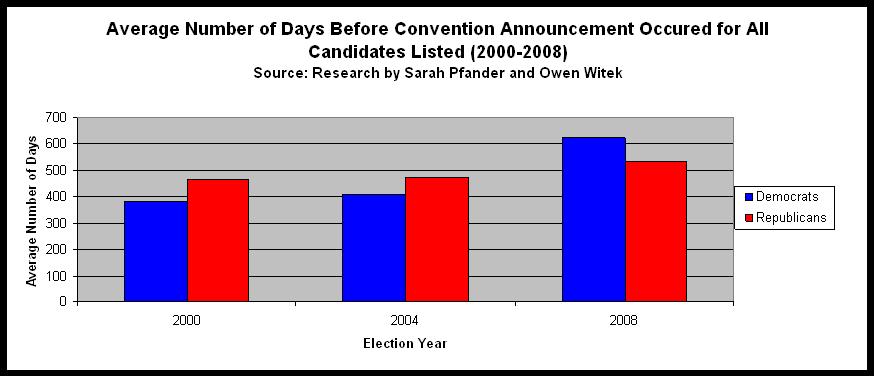As recently as this past May 20, Republicans lamented and Democrats took comfort in the conventional wisdom that the current crop of Republican presidential candidates constituted one of the weakest fields in recent memory. In less than three months, however, that conventional wisdom is about to be turned on its head if, as media sources suggest, several name-brand Republicans are really reconsidering whether to mount a challenge against the President. If this story is correct, former New York Governor George Pataki is now seriously (re)considering whether to join the race. Pataki could be joined by former New York Mayor Rudy Giuliani. Meanwhile, Republican pundit and former White House aide Karl Rove indicated yesterday that Sarah Palin was likely to enter the race as well. Not to be outdone, confidants of House Republican Paul Ryan say he too is considering a run for the president. Finally, after consistently denying any interest in running, rumors are now swirling that New Jersey Governor Chris Christie is reconsidering his decision whether to run for president.
Let me state at the outset that these are only media-inspired rumors; none of these candidates, as of this writing, have publicly declared their candidacy. We should also remember that when it comes to running for the presidency, politicians live by the adage “the only bad publicity is no publicity.” Nonetheless, I think the sudden surge in media stories about potential candidacies is not mere coincidence. In this case, where there’s smoke, there is also likely fire. And it is easy to locate the spark.
We are now less than 15 months from the 2012 election, and the stark reality is that unemployment is unlikely to drop below 8% by then. Keeping in mind that we are generalizing from a small number of cases, the plain fact is that no president in the modern era has won reelection with unemployment at that level or higher. If we consider presidential forecast models based on changes in disposable income or GDP instead, the scenario is not much better from the President’s perspective: at best, current economic projections based on these factors put the race at a dead heat, or worse. This could change in the next year, but the economic fundamentals as of today are not comforting for the administration.
One does not need to be a political scientist to see the handwriting on the wall: this President is in deep, deep electoral trouble. In my view, it is the increasing evidence of Obama’s electoral vulnerability that explains why name-brand Republicans are now apparently seriously considering a run for the presidency. Simply put, what we are seeing is an illustration of Gary Jacobsen’s argument that congressional candidates’ decision whether to challenge the incumbent are systematically informed by their evaluations of the likelihood that they can win. When conditions favor a challenge to the incumbent, the opposition candidate field becomes stronger. The same logic, I argue, is driving these name-brand Republicans to reconsider whether to challenge Obama. The President’s approval ratings are at a low point with indications that they will drop some more, economic reports suggest little-to-no job growth, economic growth remains sluggish, and the stock market has been volatile, with several days of deep drops. All this has created a growing perception, fueled by media reports, that the President is “in over his head”. Sensing his vulnerability, Republicans who otherwise might pass up the chance to challenge a sitting president are reconsidering their options. In so doing, they may be remembering 1992, when a number of prominent Democrats took a pass at challenging incumbent President George H.W. Bush, leaving an opportunity for the lesser known Arkansas Governor Bill Clinton to enter the race. When the economy went south, Clinton capitalized. Republicans do not want to make the same mistake in 2012.
How long can these potential Republican candidates wait before officially declaring whether to run? As I noted in this post discussing a possible Rick Perry candidacy, the trend in recent years has been for earlier candidate announcements. In 2008, the declaration of candidacy took place on average about a year and a half before the election, give or take a month or two . This chart shows the average announcement date for presidential candidates in the last three presidential election cycle.

The trend, as you can see, is for earlier declaration by presidential candidates. We have already passed the 2008 average declaration date, but this doesn’t necessarily preclude someone entering the race in the next few months. As I told a reporter today, based on this data, I would think that any Republican considering whether to enter the race would likely do so no later than December. That would be late by recent standards, but not prohibitively so. Keep in mind that all of the candidates-in-waiting have decent name recognition and, in some cases, have already established a fundraising infrastructure, so there is less pressure to announce earlier. Nonetheless, waiting does raise the risk that they will be competing for a dwindling pool of donations.
The latest stories are a reminder that perceptions of candidate quality are based in part on assessments regarding the incumbent’s electoral vulnerability. In the final analysis, a “strong candidate” is one that does better than expected – but expectations can evolve, based on changes in the fundamentals that drive election outcomes. And right now, those fundamentals suggest that Obama is in the fight of his political life. If, as current projections suggest, the 2012 election is now likely to be a dead heat, the marginal impact of candidate qualities may be more significant than usual in determining the election outcome. That’s not necessarily good news for those who are used to relying on our forecast models to predict the winner by September, but perhaps the excitement of a close race will compensate for the uncertainty.
